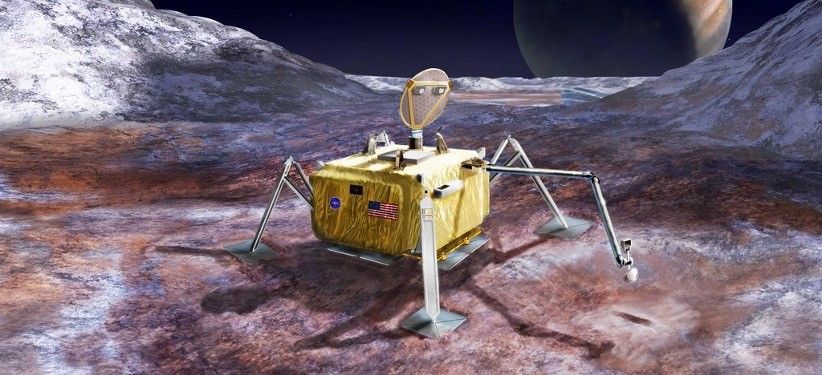As future Artemis missions establish humanity’s long-term presence on and around the Moon, habitation elements on the Gateway space station will serve as important building blocks. These elements will not only be a home-away-from home for astronauts during extended stays in lunar orbit, but also enable additional capabilities in support of Artemis objectives.
As future Artemis missions establish humanity’s long-term presence on and around the Moon, habitation elements on the Gateway space station will serve as important building blocks. These elements will not only be a home-away-from home for astronauts during extended stays in lunar orbit, but also enable additional capabilities in support of Artemis objectives.
NASA and its international and commercial partners are building Gateway – humanity’s first space station around the Moon – to provide core functions to keep astronauts healthy and thriving, including pressurized space for crew to prepare for missions to the lunar surface, conduct science, prepare meals, exercise, and rest. Two habitable elements will provide this pressurized space where astronauts can live and work. Starting with Artemis IV, astronauts will “work from home” with the Habitation and Logistics Outpost (HALO) module provided by Northrop Grumman, and integrated in later missions, the Lunar I-Hab module provided by European Space Agency (ESA). Together these habitable elements will enable astronaut stays of 30 days or more around the Moon.
The first foundational habitation element will be HALO, followed by PPE. In addition to providing habitation space, HALO will also feature extensive capabilities to ensure success of future Artemis missions, including:
- Providing the command and control nexus for all space station systems via the overarching Vehicle System Manager software suite to enable autonomous station operations.
- Regulating environment characteristics, such as temperature and air quality to keep the vehicle in a stable condition.
- Supporting high data rate communications with the lunar surface through a large antenna system called the HALO Lunar Communication System, which was developed by ESA.
- Serving as the power distribution hub, channeling power from the Power and Propulsion Element’s solar arrays to all other elements of Gateway. This includes carrying batteries provided by the Japanese Aerospace Exploration Agency (JAXA) to power HALO during eclipse periods when solar panels will not receive sunlight.
- Supporting new studies of solar and cosmic rays that could have adverse impacts on human health and vehicle systems. ESA’s Internal Dosimeter Array (IDA), with instruments provided by JAXA, will fly inside HALO to study potential radiation inside Gateway. Meanwhile, the Heliophysics Environmental Radiation Measurement Experiment Suite (HERMES) and European Radiation Sensors Array (ERSA) will hitch a ride on HALO’s exterior to measure radiation around the space station.
HALO’s multiple docking ports make it the critical foundation for the fully realized Gateway space station. Additional modules will be added to HALO including Lunar I-HAB and Lunar View, both provided by ESA with contributions from the Japan Aerospace Exploration Agency (JAXA); and Gateway’s airlock, provided by a future international partner, that will dock to Lunar I-HAB to support extravehicular activity. The same type of docking ports on HALO and Lunar I-HAB will also host visiting vehicles like the Orion spacecraft, cargo resupply vehicles to support activities on Gateway and the lunar surface, and lunar landers that will deliver astronauts and their equipment to the Moon’s surface.
Structural welding and testing for the HALO module is expected to conclude in Italy in early 2023. HALO will then be transported to Northrop Grumman’s facilities in Gilbert, Arizona, where engineers will begin the installation of various components to get the module ready for flight. Meanwhile, ESA is progressing the design for Lunar I-HAB, including its essential Environmental Control and Life Support System that will sustain astronauts during their stays on Gateway.
As NASA initiates humanity’s return to the Moon with the upcoming Artemis I launch, future Artemis missions will rely on Gateway’s HALO and Lunar I-HAB modules as a home away from home establishing an enduring human presence around the Moon and serve as a steppingstone to Mars.
Learn more about how Gateway will advance lunar exploration:
Note: This article has been updated to include the European Space Agency’s revised names for its modules: “Lunar I-Hab” and “Lunar View,” formerly known as the International Habitation (I-HAB) module and ESPRIT Refueling Module (ERM), respectively.



























